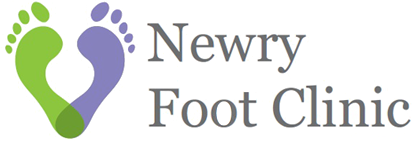Podiatry / Chiropody Treatments
Podiatry is an efficient form of diagnosis and treatment of all lower limb and foot related problems. Podiatry can be used successfully to treat general foot related problems: skin and corns; nail problems, local surgery and lower limb injuries.
Podiatrists undergo a thorough training Bachelor of Science degree in Podiatry (BSc Hons Pod) and we are Health and Care Professions Council (HCPC) registered. Therefore, we are highly skilled in diagnostic techniques to ensure quality standards of patient care.
We will take your full history taking into consideration: note your medication history, your lifestyle, past history, activity levels and working environment. These factors are important to ensure the Podiatrist can form a complete diagnosis and management plan before any treatment can take place.
We at Newry Foot Clinic aim to reduce your pain and treat your symptoms to aid your body to return to normal health.
 Phits award winning orthotics are the worlds first 3D printed orthotics which are specifically designed based on your dynamic gait analysis using footscan®.
Phits award winning orthotics are the worlds first 3D printed orthotics which are specifically designed based on your dynamic gait analysis using footscan®.
Phits are accurate to the nearest 0.1mm with no room for error in the manufacturing process, providing tailored support and cushioning where you need it most.
Phits are less than half the weight of traditional orthotics whilst offering extreme durability and comfort, whether you are walking, running or playing sport.
Regardless of your age or activity level, we have specific designs to cater for your footwear; such as walking, running, football, golf, cycling, skiing and workwear.
Phits are trusted by many British and World Champion athletes to keep them moving pain free and to reduce their injury risk.
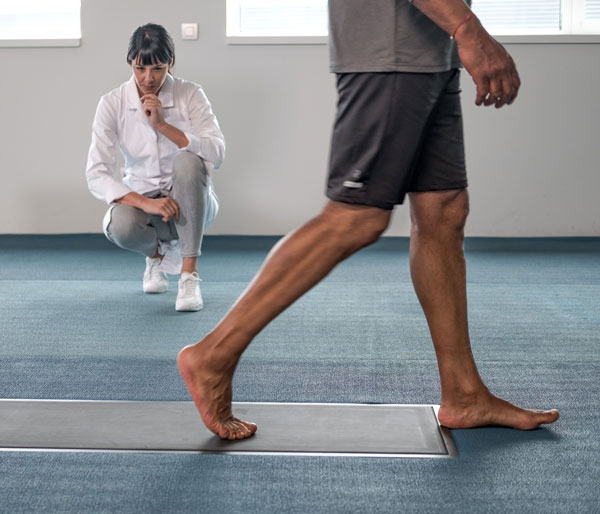 Our podiatrists will take a detailed medical and injury history, followed by a clinical examination to determine your strength and joint flexibility.
Our podiatrists will take a detailed medical and injury history, followed by a clinical examination to determine your strength and joint flexibility.
You will then complete a footscan® assessment to analyse your standing posture, balance and gait to identify any asymmetries or abnormalities.
The podiatrist will talk through your footscan® analysis and suggest the most suitable treatment pathway. This might include the design of Phits orthotics.
If prescribed, your Phits orthotics will be 3D printed to meet your exact specifications by using the dynamic data from your footscan® assessment.
After a quality check, you will return to the clinic in a couple of weeks to fit your new orthotics, providing your body with the perfect balance with every step.
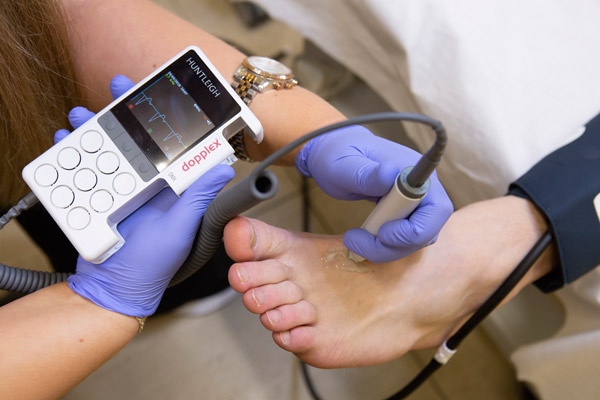 A thorough neuro-vascular assessment, after which a report of results are issued for the patient and appropriate health advice given.
A thorough neuro-vascular assessment, after which a report of results are issued for the patient and appropriate health advice given.
Marble Hill products are available in clinic, which are 100% natural, cruelty free and recommended for Diabetic skin and nails.
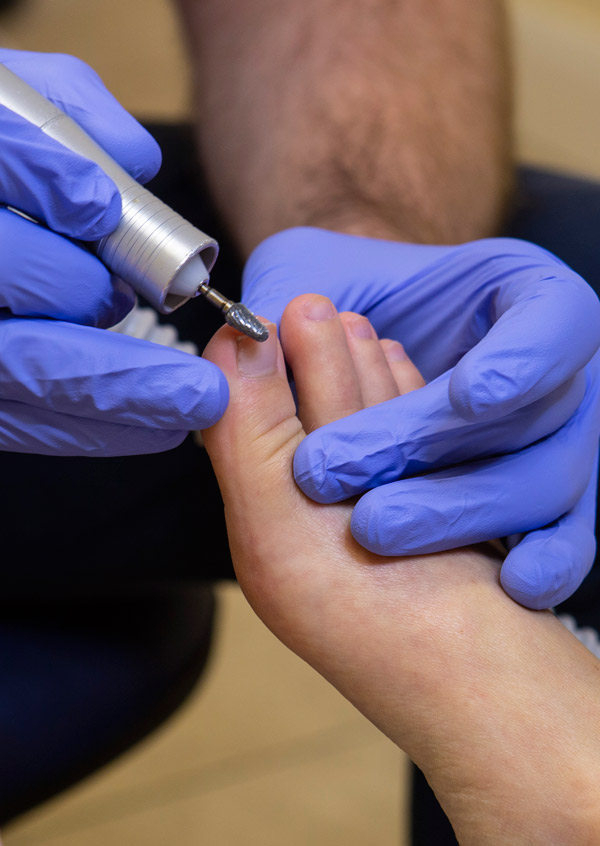
What is toenail reconstruction?
Toenail reconstruction is the restoration of a previously damaged nail by a podiatrist. The process of toenail reconstruction involves the application of numerous layers of a special gel to the nail bed or damaged nail, onto which UV light is focused in order to harden the gel. The gel used in toenail reconstruction is different to that used to create acrylic nails. LCN Wilde-Pedique Silver Plus is especially designed for toenails due to its high occlusion ability and its flexibility; it contains an anti-fungal agent and is ideal for cosmetically treating fungal, damaged and unsightly nails.
Who could benefit from toenail reconstruction?
Many different groups of people can benefit from toenail reconstruction including patients suffering from the following;
• Fungal nails
• Thick and discoloured nails
• Cracked nails
• Reduced or absent nails following trauma
• Nails with an abnormal shape or growth
• Psoriatic nails
• Beaus lines
• To replace nails removed during nail surgery
What does toenail reconstruction involve?
The process of toenail reconstruction is as follows;
1) Any remaining unwanted nail is reduced as much as possible by the podiatrist and the surface of any nail which cannot be reduced is filed to produce a rough exterior.
2) The podiatrist cleans the nail removing any dirt or oil and disinfecting the area.
3) An antifungal agent is applied to the surface of the nail or nail bed to allow the gel to bind more easily.
4) A special gel is applied in liquid form onto the surface of the natural nail/nail bed. The gel is applied in layers using UV light to harden the gel after each layer.
5) Once the nail is formed into an appropriate thickness, it is smoothed over and in some cases a layer of gloss is applied.
What are the benefits of toenail reconstruction?
Those thinking of receiving toenail reconstruction can benefit from the following factors;
• The reconstructed nail looks and feels like a natural nail
• Improves confidence and morale
• The new nail is flexible so can move naturally as the toe moves
• The gel contains no aggressive chemicals
• The natural nail and nail bed remains undamaged
• The gel used has antifungal properties
• The reconstructed nail is suitable for diabetics
• The new nail can be treated in exactly the same way as the previous natural nail
• Can last up to 4- 6 weeks
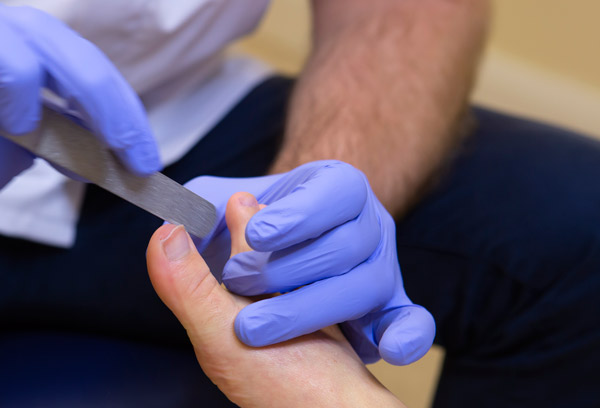 Treatment and advice on conditions including: corns, calluses, thickened or fungal nails, ingrown toenails, bunions/toe deformities, athlete’s foot etc.
Treatment and advice on conditions including: corns, calluses, thickened or fungal nails, ingrown toenails, bunions/toe deformities, athlete’s foot etc.
Nail Surgery is a process to remove painful ingrown toenails. After the toe has been anaesthetised, a tourniquet will be applied temporally and the nail or part of the nail will be removed. The chemical phenol is applied to prevent nail re-growth. The tourniquet is then removed and the toe is dressed. An appointment is made for a few days following surgery to review and re-dress the toe.
A full medical history is taken before treatment can take place. A list of any medication currently being taken must be given to the podiatrist. A spacious slipper or sandal is advised and you will need someone to drive you home after surgery as you will not be covered on your car insurance.
More in-depth information will be given before and after treatment, verbally and written. Nail surgery using phenol has a very high success rate of 95%, the procedure is painless and the risk of any complications is very small.
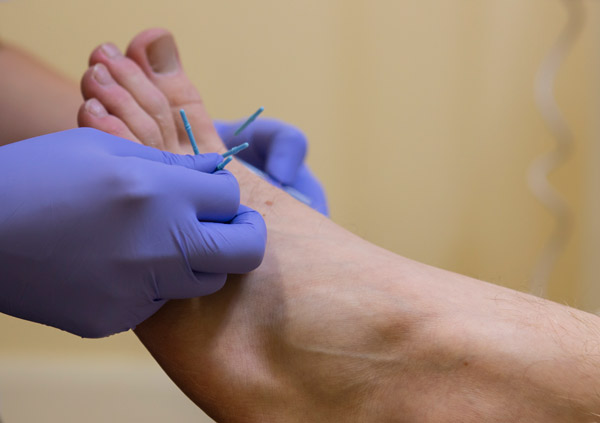 Podiatric Acupuncture is the insertion of very fine, single use and sterile needles into the body for therapeutic purposes. It is a very safe and usually pain free treatment.
Podiatric Acupuncture is the insertion of very fine, single use and sterile needles into the body for therapeutic purposes. It is a very safe and usually pain free treatment.
Acupuncture in podiatry can be used to treat and aid many medical conditions. It is particularly useful for pain of musculoskeletal and neurological conditions relating to the lower limb. Common conditions treated include plantar fasciitis, Achilles tendon injuries, shin ‘splints’, calf cramping, and arthritic joint pain as well as neuropathic pain such as neuromas.
It can be used directly on knots in the body known as trigger points to relieve pain locally in the muscle or in other areas in the body. Furthermore, energy points known as ‘Acu’ points which are connected to meridian pathways in the body can also be targeted to relieve pain and help the body return to normal health. Acupuncture can be used very effectively as an individual treatment or in conjunction with other modalities, to offer the very best in patient care.
